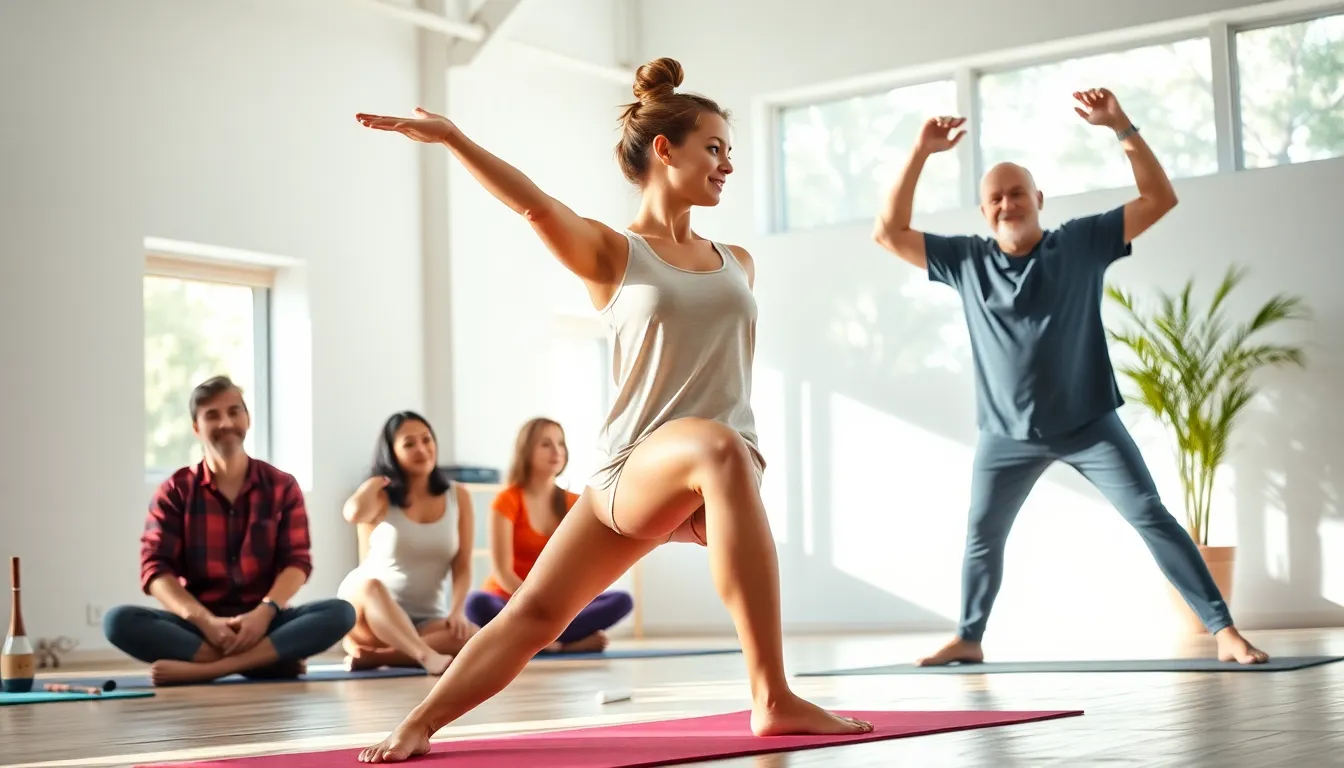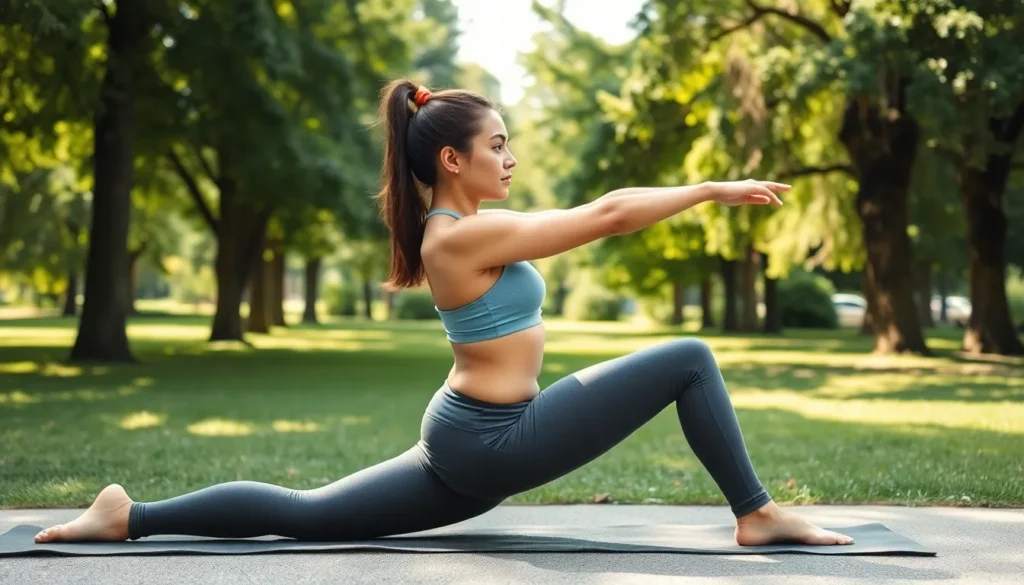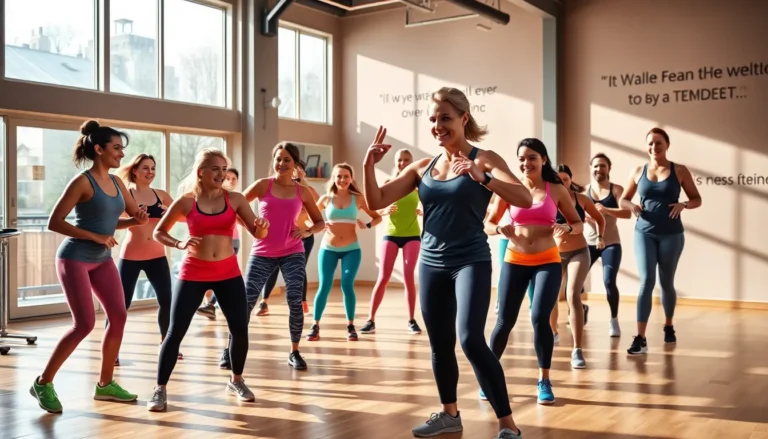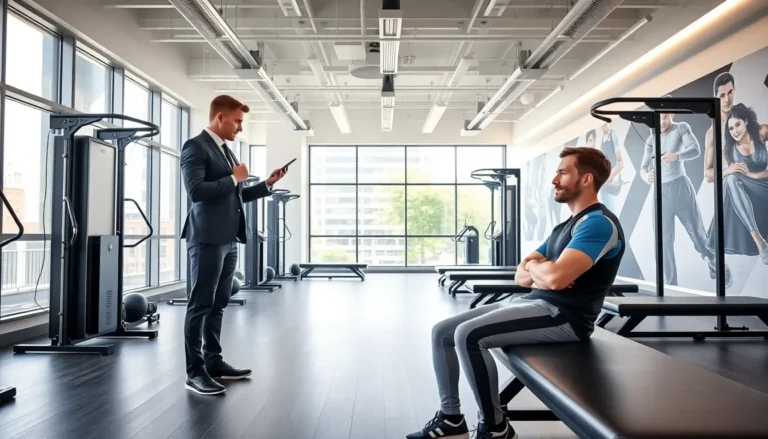In a world where bending over to tie your shoes feels like an Olympic event, flexibility improvement is more crucial than ever. Whether you’re a seasoned athlete or someone who struggles to reach for the remote, enhancing flexibility can transform your daily life. It’s not just about impressing your friends with your ability to touch your toes; it’s about feeling great and moving with ease.
Table of Contents
ToggleUnderstanding Flexibility Improvement
Flexibility improvement plays a crucial role in enhancing overall quality of life. This enhancement supports physical activities and contributes to mental well-being.
Importance of Flexibility
Flexibility impacts daily movement and physical performance. Enhanced flexibility reduces the risk of injury. Improved flexibility leads to better posture and alignment. Individuals with better flexibility can engage in activities like sports more effectively. Regular flexibility training promotes circulation, aiding in recovery. Mental benefits arise from flexibility exercises, as they help reduce stress and increase relaxation.
Types of Flexibility
Static flexibility involves holding a stretch for an extended period. Dynamic flexibility focuses on actively moving muscles through their full range of motion. Ballistic flexibility consists of using momentum for stretching, common in some sports. Proprioceptive neuromuscular facilitation (PNF) includes a mix of stretching and contracting muscles. Understanding these types enables tailored flexibility training plans for various needs and activities.
Factors Influencing Flexibility Improvement


Flexibility improvement depends on various factors that affect an individual’s ability to stretch and move comfortably.
Age and Flexibility
Age significantly impacts flexibility. Younger individuals typically experience greater flexibility due to more elastic muscles and connective tissues. Changes in muscle composition occur with aging, resulting in reduced elasticity. Joint health also declines, leading to stiffer movements. Regular flexibility training can counteract these effects, promoting mobility at any age. It’s essential for older adults to engage in gentle stretching exercises to maintain function and quality of life. Research indicates that starting flexibility training early can yield long-term benefits, establishing a foundation for continued mobility.
Physical Activity Levels
Physical activity levels directly influence flexibility. Regular exercise promotes muscle lengthening and joint mobility, enhancing overall flexibility. Individuals who engage in activities such as yoga, dance, or sports often exhibit higher flexibility compared to sedentary individuals. Inactive lifestyles contribute to tight muscles and limited range of motion, increasing injury risk. Incorporating varied forms of movement into daily routines can facilitate long-term flexibility improvement. Consistency in physical activity, even low-impact exercises, contributes to sustained flexibility gains and improved physical performance over time.
Techniques for Flexibility Improvement
Flexibility improvement can be achieved through various techniques, each designed to enhance range of motion and support overall health.
Stretching Exercises
Stretching exercises serve as one of the most effective methods for increasing flexibility. Static stretching helps lengthen muscles by holding a position for 15 to 30 seconds, enabling greater muscle elasticity. Dynamic stretching prepares the body for movement, involving controlled motion to improve muscle activation prior to physical activities. Ballistic stretching incorporates momentum, but caution is necessary to prevent injury. Incorporating a variety of stretching methods into routines promotes balanced flexibility and reduces muscle tightness.
Yoga and Pilates
Yoga and Pilates offer structured approaches to enhancing flexibility while promoting mindfulness. Yoga combines poses that encourage deep stretching, focusing on breath control and relaxation. Various styles, such as Hatha and Vinyasa, provide options for all skill levels. Pilates emphasizes core strength and stability, supporting balanced muscle engagement and improved posture. Regular participation in these practices can lead to long-term flexibility gains, aligning the body and enhancing overall well-being.
Benefits of Flexibility Improvement
Flexibility improvement provides numerous advantages that enhance quality of life. These benefits extend from physical performance to injury prevention, making flexibility training essential.
Enhanced Performance
Improved flexibility contributes significantly to enhanced physical performance. Athletes often experience increased range of motion, allowing for a greater variety of movements during activities. Performance in sports like gymnastics and dance depends on flexibility, enabling precise and controlled movements. Additionally, individuals engaging in physical activities, such as running or weightlifting, notice enhanced effectiveness due to better muscle elasticity. Flexibility training allows muscles to work more efficiently, which often translates to increased strength and endurance. Furthermore, better flexibility aids in performing complex maneuvers, contributing to overall athletic achievement.
Injury Prevention
Injury prevention stands as a critical benefit of flexibility improvement. Enhanced flexibility allows for greater joint mobility, reducing the risk of strains and sprains during physical activities. Tight muscles often lead to misalignment, which increases the likelihood of injuries. Regular stretching routines help maintain muscle length and function, promoting healthier movement patterns. Individuals participating in consistent flexibility exercises typically experience fewer injuries. Greater flexibility aids in effective warm-up routines, preparing muscles for activity and decreasing the chance of injury during high-impact exercises. Overall, prioritizing flexibility improves both safety and performance in physical pursuits.








